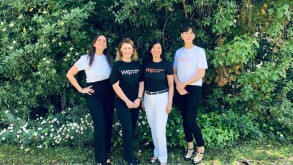In yesterday's session “Describe Your Best Defence: Trade Mark Infringement or Not?”, in-house and private practice lawyers shared case studies and strategies for brand owners when they are faced with parties, including director competitors, that claim fair use as a defence.
In China, Ying Mu, partner at Global Law Office, said that Articles 59.1 and 59.2 of the PRC Trademark Law stipulate the circumstances for descriptive fair use in China. Parties do not have the right to prohibit others from using the generic name, graphics or models of a commodity.
A recent case in China involved Dreamworks’ Kung Fu Panda movie trademark and a Chinese company that had registered a mark using the Chinese translation of Kung Fu Panda and claimed fair use. The Supreme People’s Court outlined the decisive elements in deciding whether there is descriptive and fair use. These decisive elements include whether the use is in good faith, when the trademark was first used and whether the mark is used in a prominent way. Although the intention of a user plays a role, it is hard to define and often poses a challenge for brand owners.
According to Maria Scungio, partner at Robinson+Cole in New York, under the Lanham Act, Section 33 (b)(4), fair use is identified as a defence. Factors that the court considers include whether products have been competing with each other, how pervasive the products are and how long they have been in the market.
Scungio said that because US statutes are complemented by commercial behaviour in the market, factors that are important to consider are proof of use and the context of use in the past and future, to show consistency.
“You need to look at the continuum relative to the company itself and the market,” said Scungio.
She added that US trademark laws blend in unfair competition in the statutes and make it challenging to draw the line between unfair competition and passing off.
The likelihood of confusion is another factor that brand owners have to consider in descriptive use cases.
Kathy Atkinson, legal director of Kettle Foods in the UK, shared the example of when the company was involved in trademark infringement proceedings in the Netherlands. The case centered on the use of the words ‘Kettle Cooked’ by Intersnack as a cooking method description of potato chips. The court ruled in favour of Intersnack and said that Dutch consumers would understand ‘Kettle Cooked’ to be a description of the cooking method and that the average consumer would have a sufficient grasp of English to understand the words to mean cooked in a kettle.
Kettle Foods only had 2% of the total market share and its reputation was not sufficient to entitle it to enhanced protection as a famous trademark. However, with trademark laws being territorial, the company has had success and settled cases in other parts of Europe, including Italy, Spain and Belgium.
Atkinson added that in establishing generic use, having evidence is key.
“Actual confusion is like gold, so bringing the evidence forward will always help you; if not, argue for the likelihood of confusion, but sometimes, it would just be on an academic argument rather than actual evidence,” said Atkinson.
As a final tip for brand owners, Atkinson said: “Jump on anything you see and don’t let it take hold. Take action in every case and never rest.”
The Congress finishes on September 18.
Image credit: Simon Callaghan Photography











